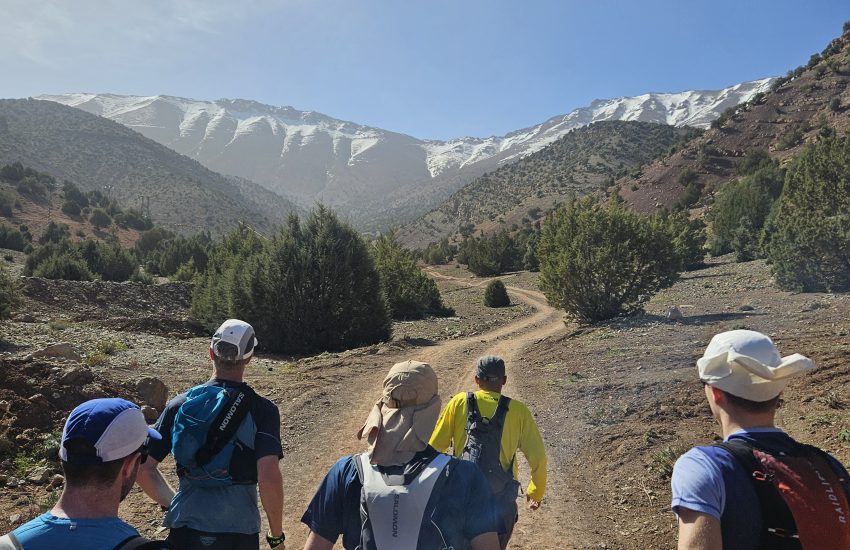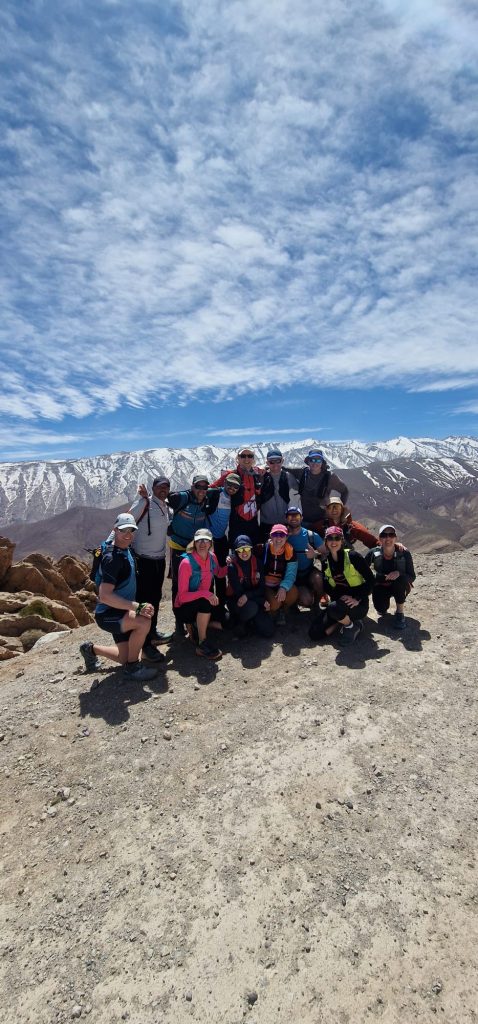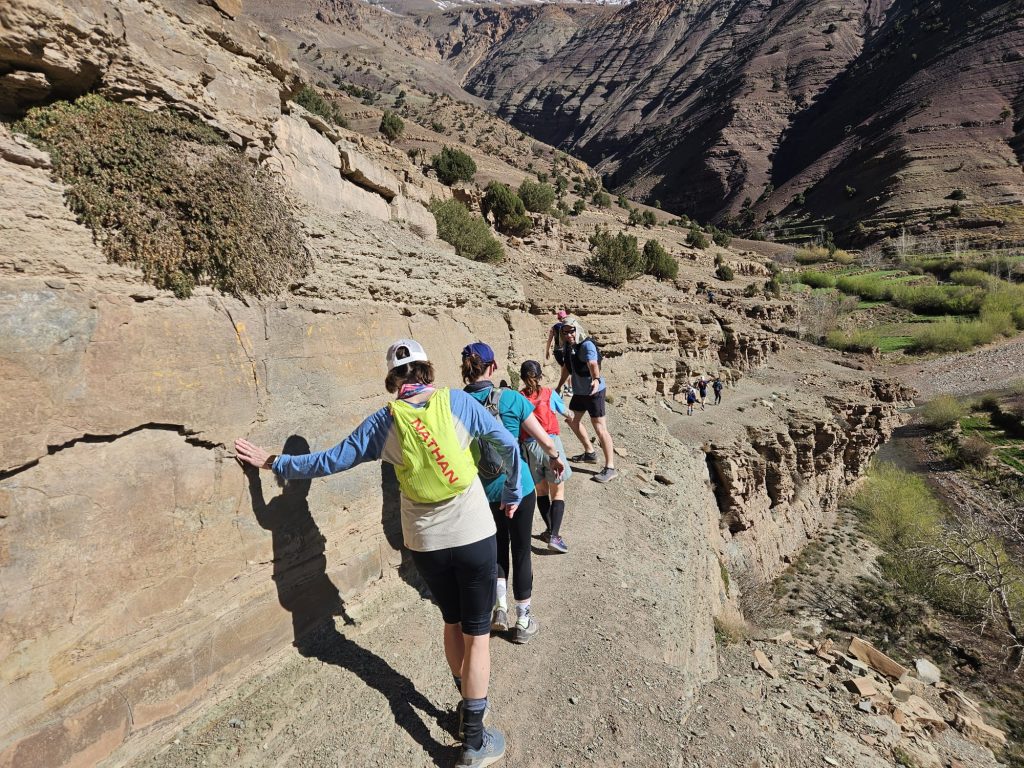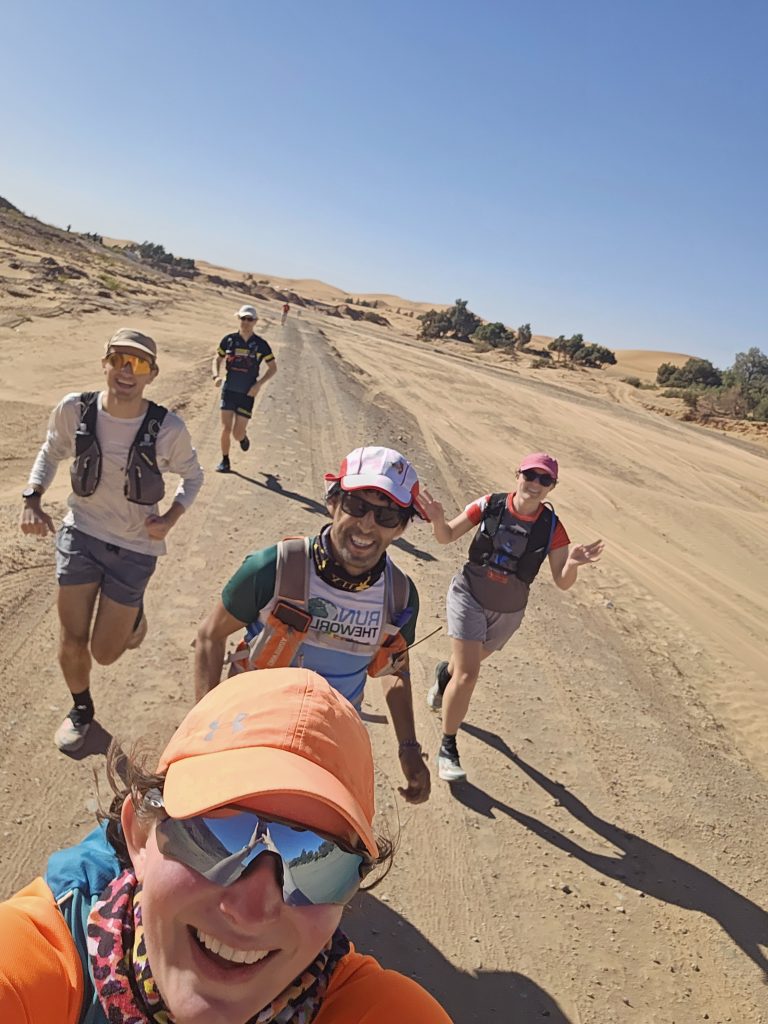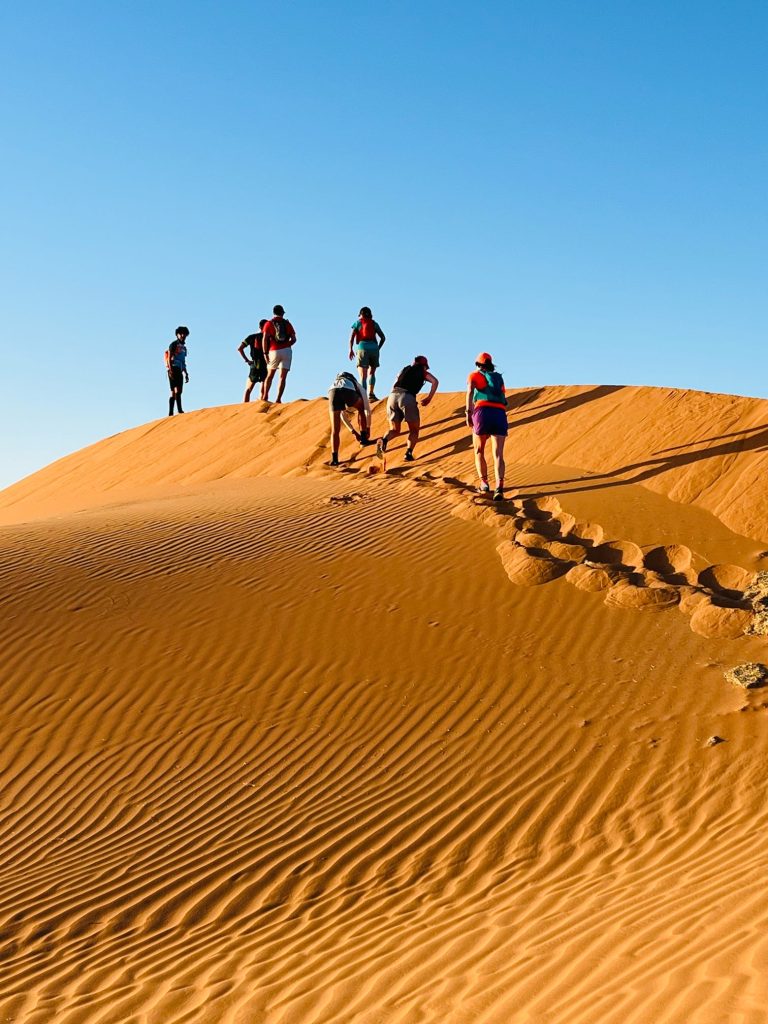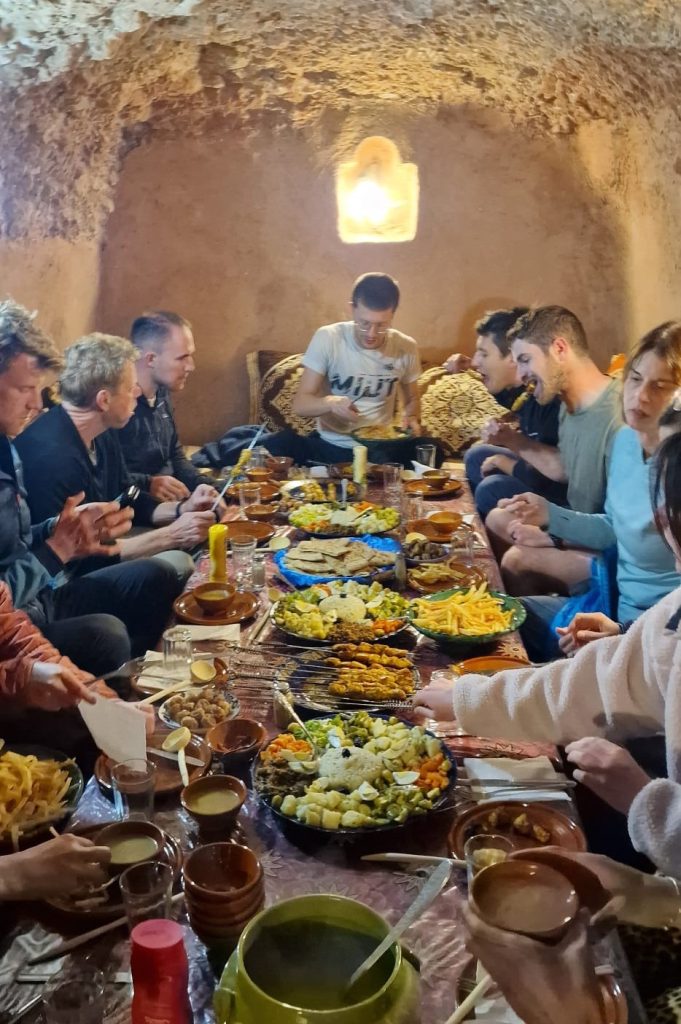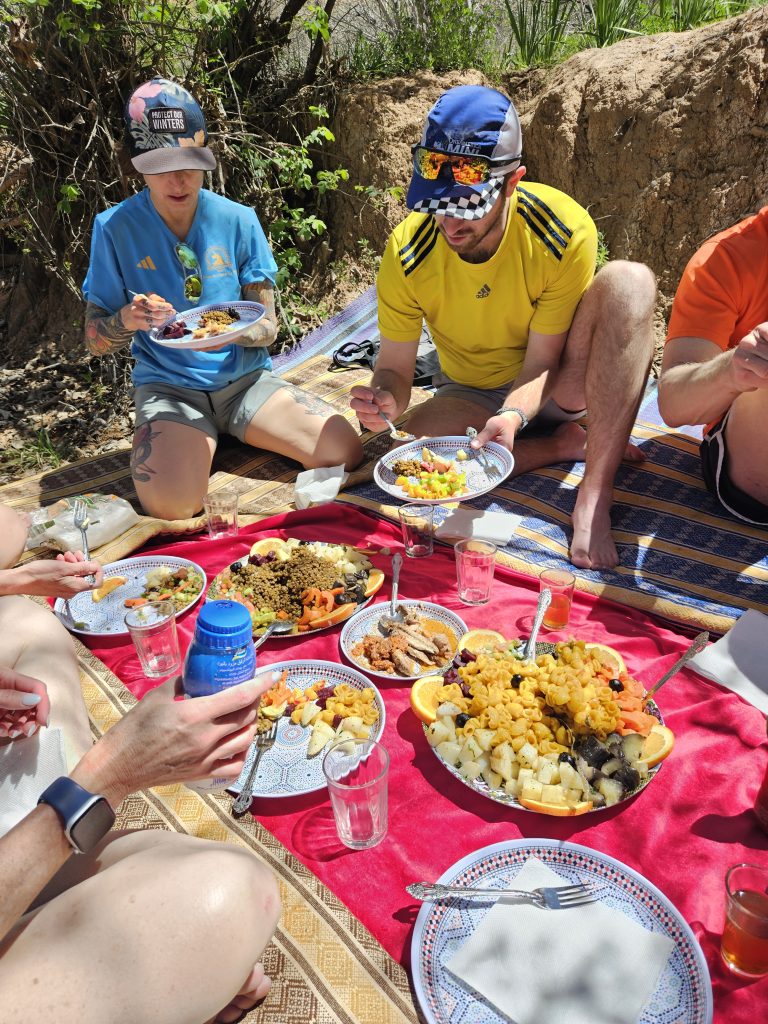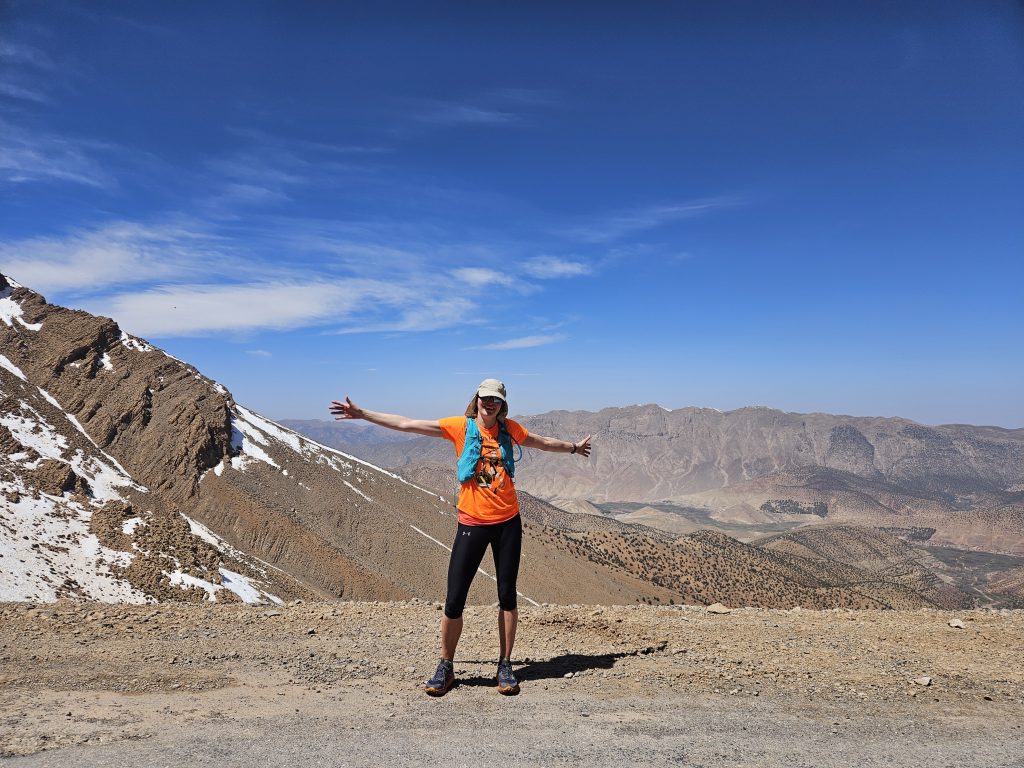
Following a challenging year of injuries in 2024, I needed a new focus to get my training back on track for 2025. I reached out to a work contact who I remembered, nearly a decade ago, had taken a running trip to the Costa Brava.
A quick Google search revealed that the company previously known as “Run Costa Brava” had now expanded to “Run the World Adventures”. Owned by Pablo Rodriguez, an ex-professional triathlete, and his wife Cristina, the Moroccan adventure is run in conjunction with Abdu Oukioud, a handy 8.09 3000m junior Moroccan athlete, now a professional guide and a native of the ancient Moroccan Berber community.
The Berbers are the indigenous people of North Africa, possessing a distinct culture and language.
The action-packed 130km Morocco itinerary traversing the High Atlas Mountains, Berber villages, crossing rivers and valleys, and venturing into the mystical Sahara Desert sounded perfect! On reflection, I hadn’t really considered how hard 130 kilometres trail running might be on the body. Probably for the best, as I nurse my aching feet over one week later!
This is definitely not to be confused with a “holiday” or a “tour.”
The adventure began on Saturday, 29th March 2025, meeting at 6:30 PM on the terrace of the pre-arranged hotel (this would be the last hotel for four nights!). Twelve athletes huddled around a small table as Abdu unfolded a large map of Morocco. “This is definitely not a vacation,” he laughed!
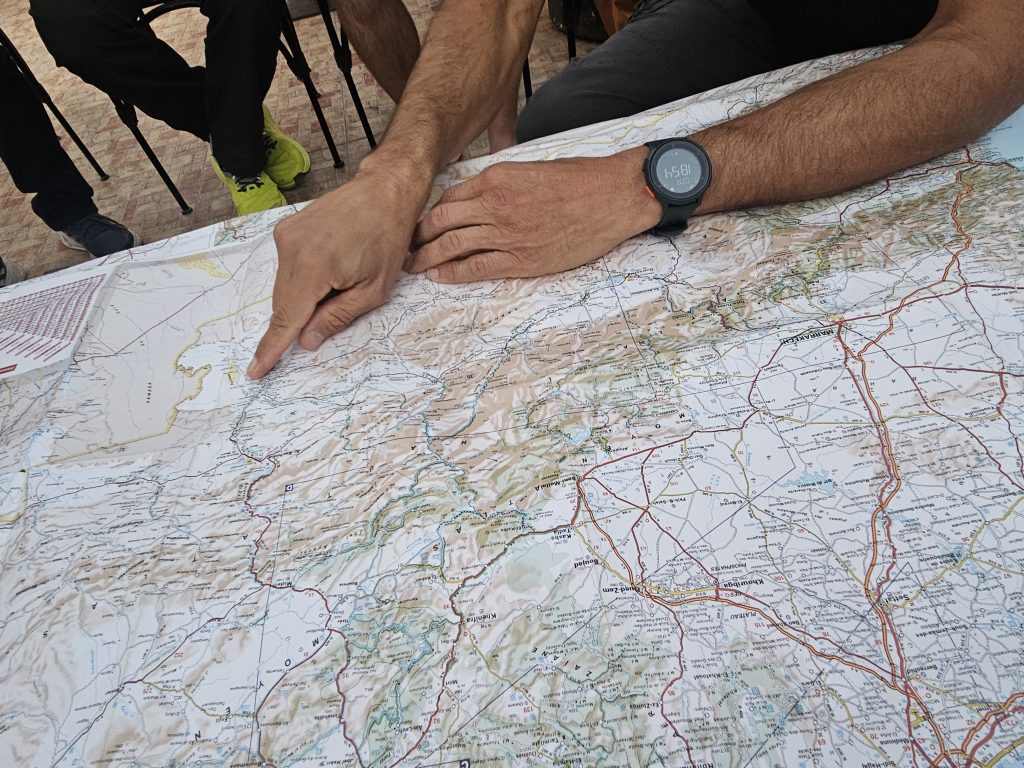
This is a running adventure.
We introduced ourselves, six guys and six girls, hailing from the US, Netherlands, Catalonia, and Ireland. Friends, solo travellers, and one couple – we were all about to be united through an incredible running experience!
We spent the evening together in the atmospheric Medina in the centre of bustling Marrakesh, Abdu selecting snacks for us to try, including the local delicacy of Sheep’s head.
None of us really understanding what lay ahead and the adventure awaiting.
It really felt like we had travelled back in time.

Day 1 began with a bus journey east out of Marrakesh. All the tour buses head south – we were heading east into the remote heart of Berber country, approaching the High Atlas Mountains from the north. This region of Morocco is largely untouched by tourism, and for four days we saw no other western influence, no cars or motorbikes, no shops (all food supply is either grown or purchased at a weekly market), no TVs, internet was patchy with some days having no coverage at all.
Running to the village of Timit in the Happy People Valley.
Our first run was an acclimatization run. We had climbed to 1000 meters during the drive and all jumped out of the van, eager and ready to stretch our legs. In clear blue sky and strong sun we jogged 10 kilometres, through small village settlements, taking in the mud houses and straw roofs, meeting laden donkeys and children herding sheep. The terrain of dirt paths, rocky and jagged stones, then sandy and shrubby growths with gentle undulating slopes, was immediately challenging. Ankles were already rolling, and bravely ran off!
The final section of the ‘easy’ run included a climb to 1850 meters to Mt Timit and a view over the Happy People Valley, a beautiful orchard of apple and almond trees.
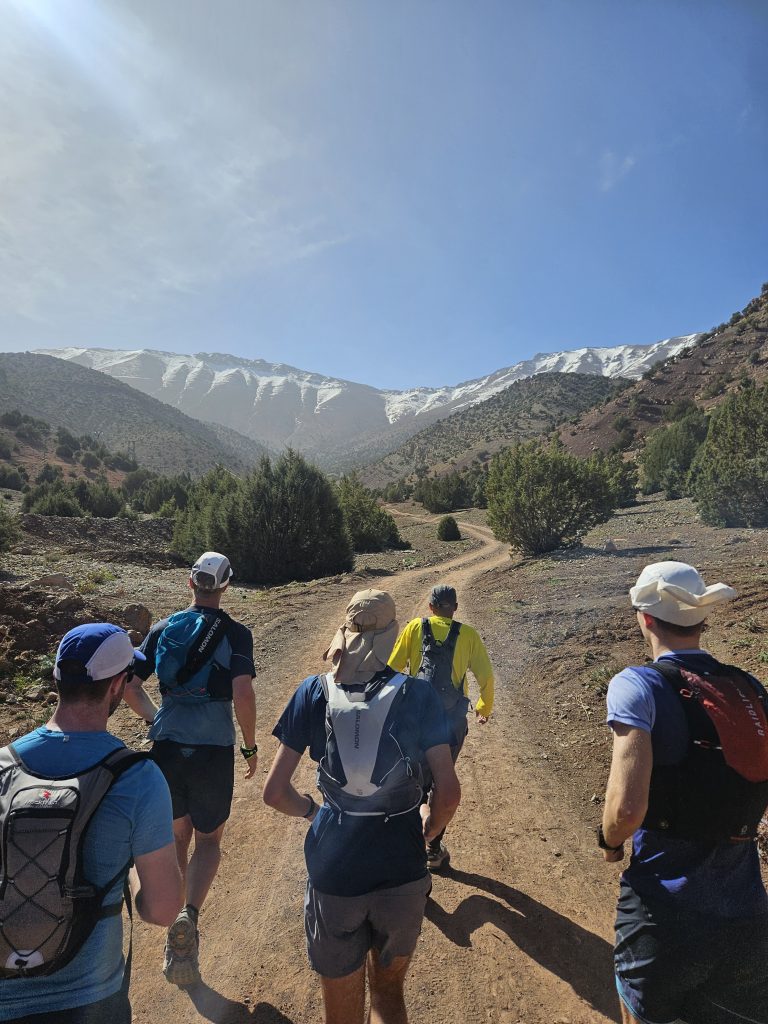
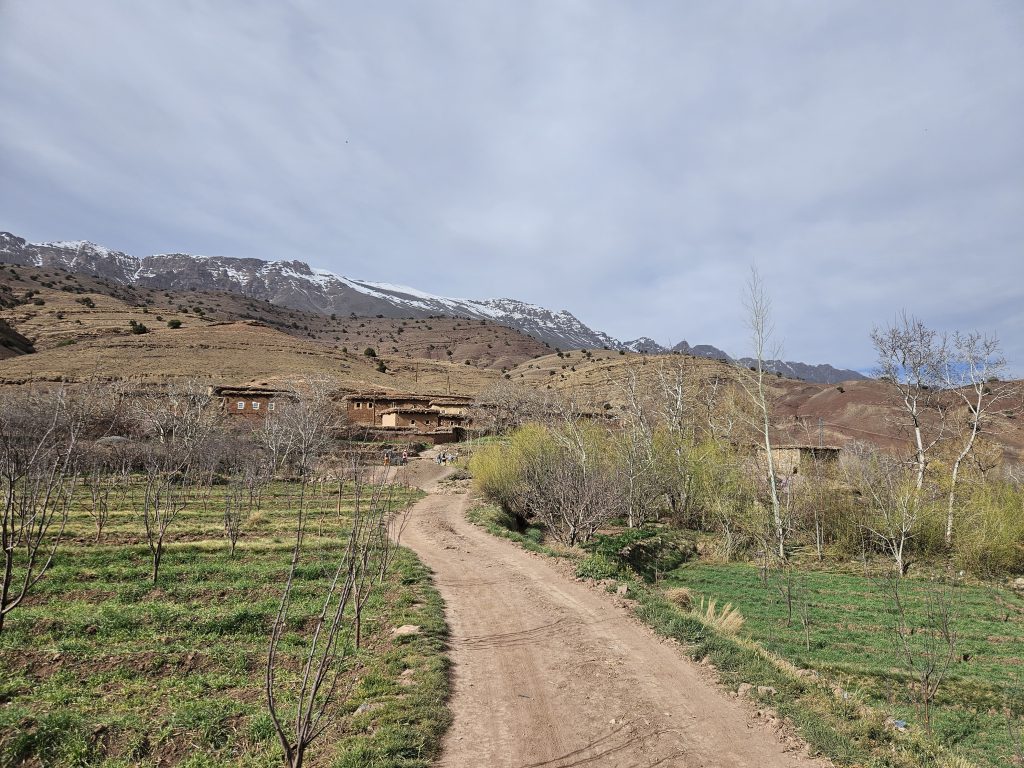
We stayed in traditional Berber Gites in
remote villages for the next 3 nights.
Arriving at our first Gite, we were treated to
warm, freshly made Moroccan pancakes,
nuts, dried fruits, and an array of preserves
and honey – this would be the staple at the
end of each long day’s running and
something we all looked forward to!
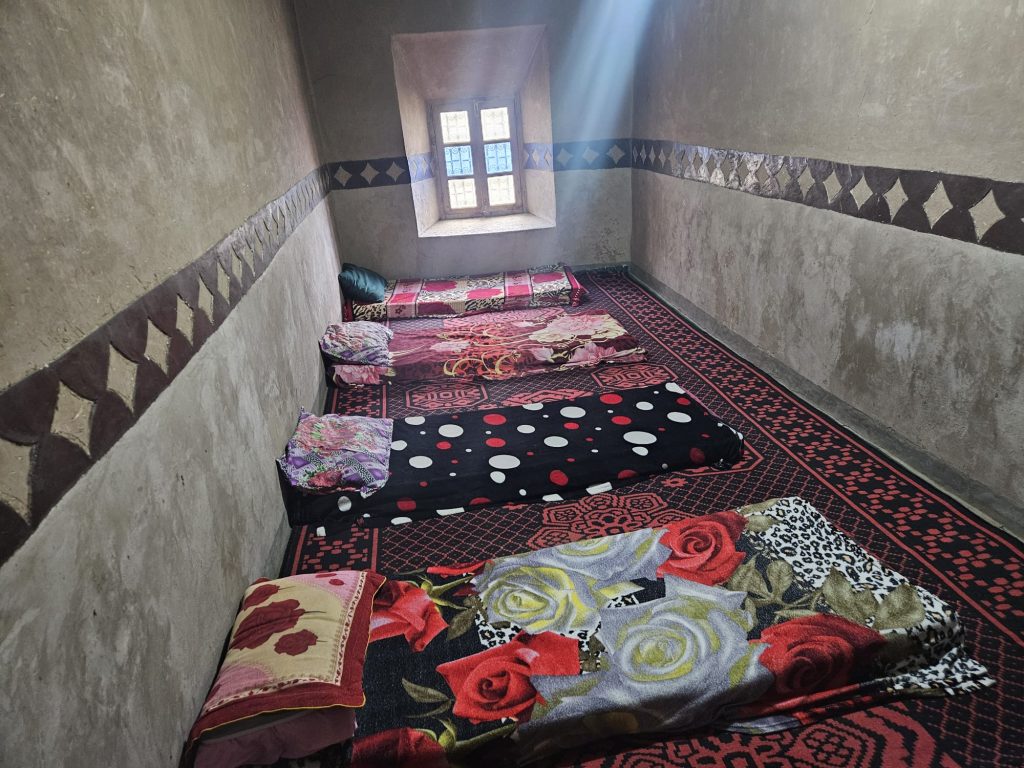
The Gites were extremely basic by Western standards but after a long day’s running, we all slept well. (The last 3 days we stayed in good quality hotels with comfy beds, quality linen and towels.)
Days typically started early, with breakfast at 7 AM, water bladders filled, and snacks packed, ready to run at 8 AM. The runs were point-to-point, with our bags transported from A to B each day.
We typically needed enough water to last up to three hours, where either a support vehicle would meet us to replenish or we would stop for lunch (or 2 nd breakfast!), prepared alfresco by two extremely talented travelling chefs.
Each evening after dinner, we were briefed on what lay ahead the next morning.
We all listened intently as we were warned Day 2 and Day 6 will be the hardest, both 30 kilometre plus days over the most challenging terrain.
At almost 3000 meters, this mountain was almost 3 times higher than the highest mountain in Ireland.
So we set off on Day 2, ascending to Tizi’n’Timit pass at 2,901 meters. I wasn’t prepared for what lay ahead. My throat was dry from the altitude, and my breath short! But on we went, a mixture of jogging and trekking, negotiating snowy sections, and even on hands and knees when required. At the top of the Tizi’n’Timit pass, the view was incredible!
What goes up, must come down.
Descending to the valley below was equally as
challenging. The pace was steady, but I soon learned that my leggy, loppy stride was not suitable for trails and definitely not downhill. We were quickly told, ‘imagine the rocks are on fire,’ ‘limit ground contact as much as possible’. We listened. And so, we danced, and weaved, childlike, down the mountain, tallying up 32ks for the day!

“This run is sponsored by Ibuprofen”
Waking up the next morning for Day 3 and already a marathon in the legs, there were many aches and pains, and ibuprofen readily consumed as a breakfast accompaniment. Off we set, for 28 kilometres towards the remote heart of the Atlas Mountains, following mule paths and crossing the river through the deep M’Goun canyon, towards the Sahara Desert.
In the packing list sent before the trip, we were advised to purchase waterproof socks. These were a novel item for all, and we weren’t sure exactly how they would work. The
result was rather strange. The socks worked like a wetsuit, trapping water between the sock and foot, but the water was so icy cold that most of us still had numb feet.
It did not dampen our spirits, and on we ran!
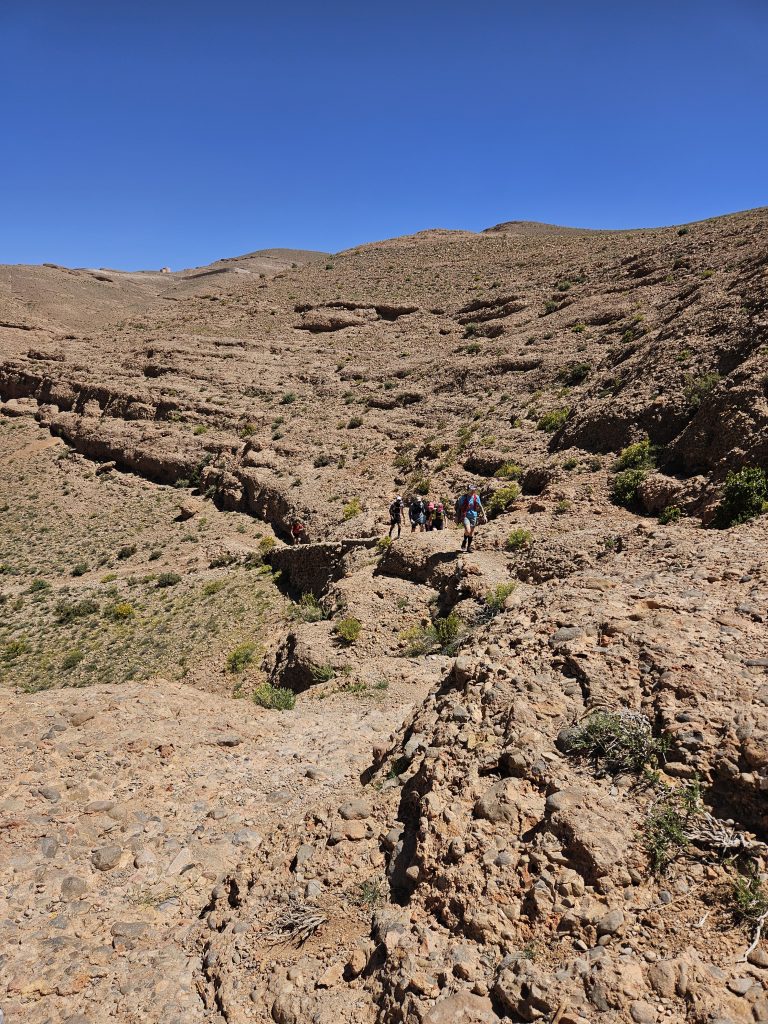
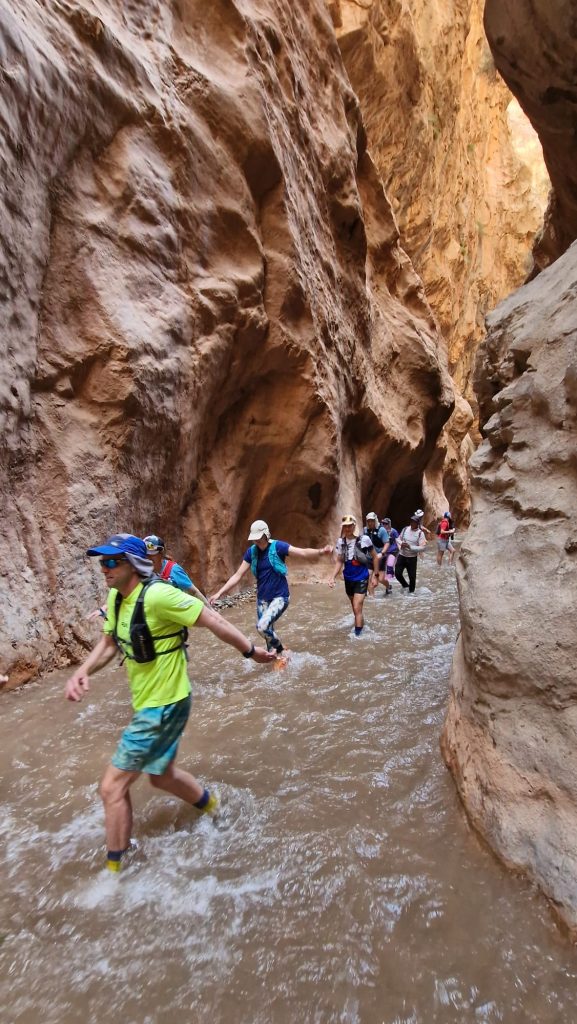
River crossing literally meant crossing the river possibly 100 times, so frequently that it became second nature. The current was strong and more than one runner succumbed to a wet demise! The hardest sections were the stretches between the deepest river sections, where we would find a path inland and run in our soaking wet shoes with our waterproof socks pooling at our ankles.
“1st into the forest, 2nd into the bog”
Day 4 was an easy 24 kilometres on a mixture of river and trails through the Valley of Roses. The scenery throughout was breathtaking and ever changing. Some trails were on very steep sides of the canyon, (I really didn’t want to look down), while others were along single-file irrigation channels. The clay-made channels would disappear under our feet like hidden traps, with the unfortunate athlete collapsing into the watery channel. Other sections were almost tropical, with towering reeds and wading through water almost waist-high – it was truly like nothing else imaginable. For two days, we ran with sodden feet and smiles on our faces.
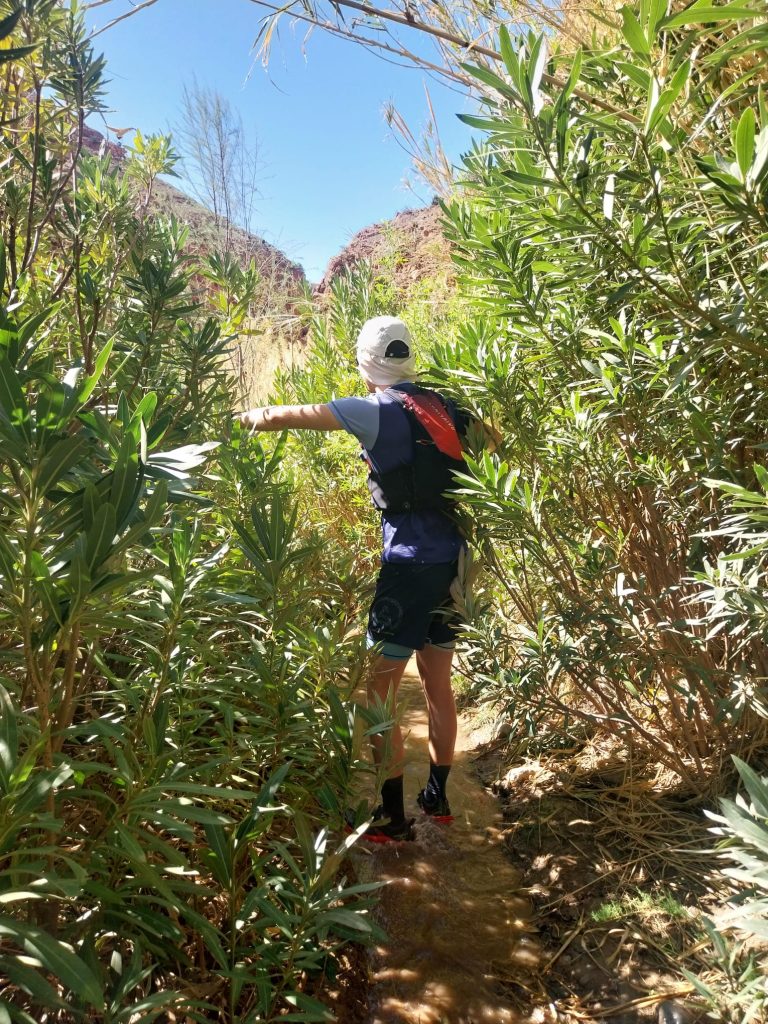
“Run in a Sandstorm – natural exfoliation”
On Day 5, we transferred to the edge of the Sahara Desert, to the Merzouga Dunes, where we spent the next two days running south through the Desert towards the Algerian border.
Our first run was a 10-kilometer stretch toward the Dunes. This was a relatively flat run on relatively hard sand but with the added charm of a sandstorm! Pretty much immediately, we all realized the buffs we were advised to wear were a necessity, and with sunglasses it was necessary to have the entire face covered. It was hot, running at 3:30 PM. The temperature gauge was showing 35°C, but it felt cooler with the wind and exfoliating effect of the sand!
Watching a sunset over the Sahara, simply unforgettable.
After checking into our hotel we then headed into the dunes, climbing the highest dune – almost 300 meters high, and watching the sunset. Climbing the dune was one of the hardest hill sessions imaginable. (Paddy’s hill ain’t got nothing!)
With the ground disappearing on each step, we approached it in 10-second intervals, literally gasping for breath after each climb.
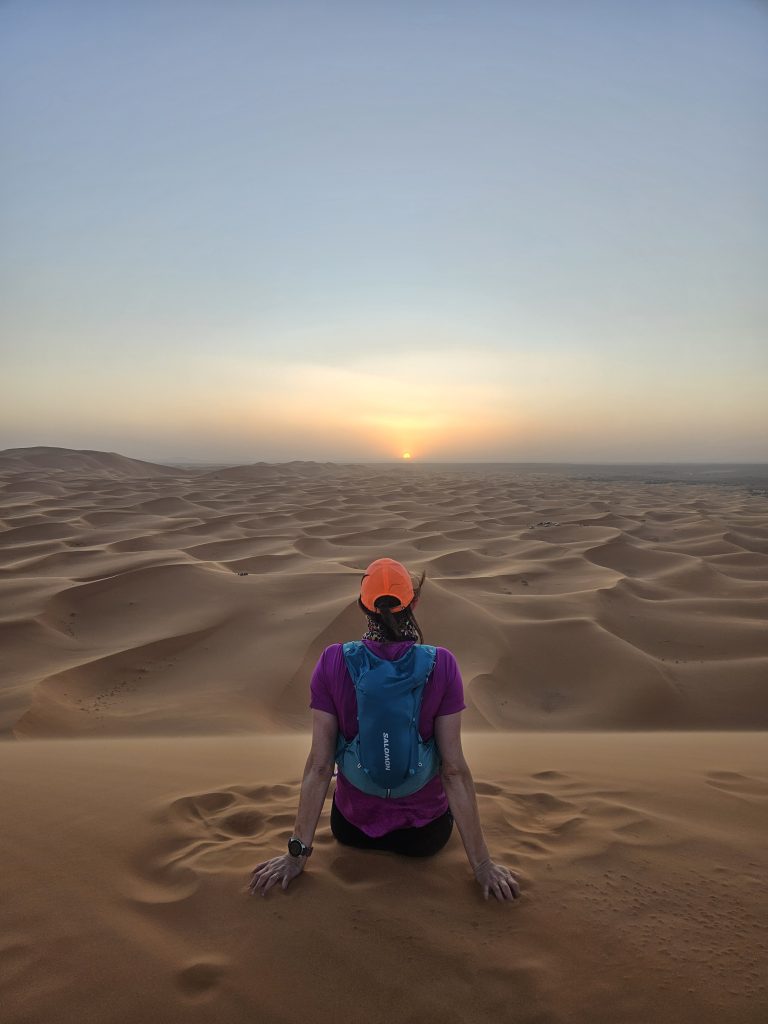

Our final day, Day 6, was met with mild trepidation. We would be running for almost 30 kilometres across the Sahara Desert. We woke at 3 AM for breakfast and were ready to go at 4 AM. Adorned with headlamps and enough water and snacks to last for the almost three hours until sunrise, when a support vehicle would meet us, we set off into the pitch-black Sahara. We had our headlamps on the red setting as this meant we could let our eyes adjust properly to the darkness and enjoy the starry sky.
What a spectacle awaited us. The Milky Way in full view.
The Sahara Desert far removed from city lights offers some of the darkest skies on earth and boy did the night sky put on a spectacle for us. Shooting stars, glowing constellations but most impressive the creamy band of light, the Milky Way, glowing softly.
Witnessing how our galaxy got its apt name and peering into its depth, is a memory that will last a lifetime. Stargazing here is truly magical, as the vast skies are transformed into a dazzling display.
Our amazing guide, Abdu, lead us through the desert in pitch darkness following the Scorpius constellation, used for centuries to guide the Berber people through the desert.
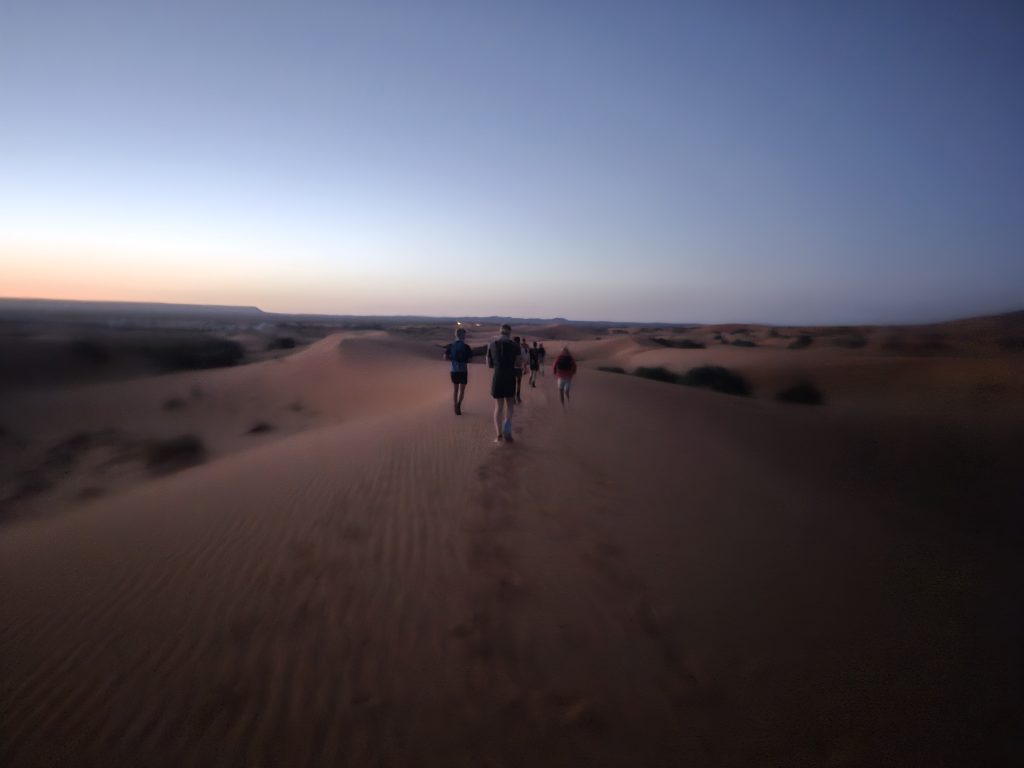
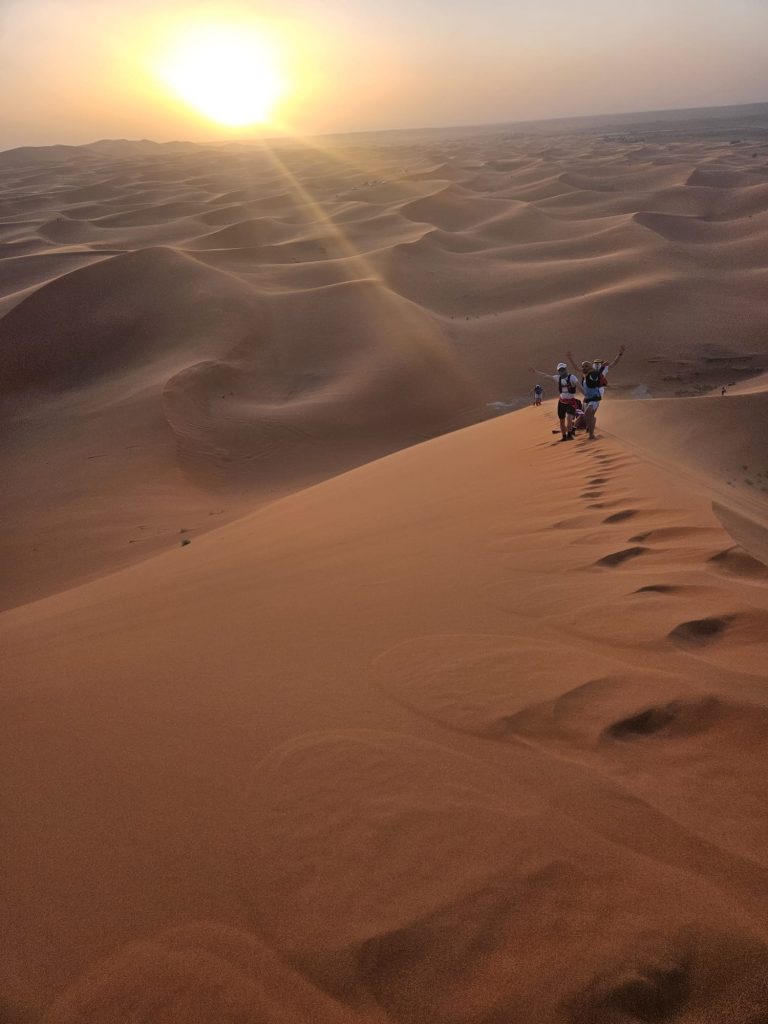
Trail running just hurts different.
Running in the heavy sand, climbing high dunes, and letting the body fall over the steep side was an out-of-body experience. It was true sensory disorientation, and many of us felt quite unsettled at times. The pace was
also much faster than we had hoped! As the sun began to rise, the sky turned, and we could see the Algerian border. We stopped on top of the tallest dune for snacks and to enjoy the tremendous view.
Saharan Sand Shuffle
As the sun rose, the temperature started to increase dramatically. Suncream was applied generously and frequently onto already sandy skin. We had run almost 8 kilometres over the large dunes, and with another 20 kilometres or so go, it was a daunting prospect as the temperature rose.
I fuelled continuously (also finding life in salt sticks), and putting my trail running learnings to work, found a good steady pace in what I named the Saharan Sand Shuffle! The terrain would change from deep soft sand, hard sand, dunes, rocky paths, and scrubby vegetation. As we approached the end of the run, there was a sense of euphoria and an emotional celebration at what we had all achieved in the last 6 days.

For all the data nerds, my Garmin displayed an estimated calorie burn of 4000+ a day, so we were hungry athletes!
What made the adventure unique was the personal influence of Abdu, Pablo, and the other two guides, Brahim and Syed. We never felt like tourists. Our days running were broken up visiting relatives of the guides and each time we were greeted like family and treated to the ritual of Moroccan mint tea, shared couscous with vegetable and roast chicken (that tasted just like my granny’s used to!), pancakes, fresh bread, salads and olives.
Each day the food was a marvel. We devoured freshly made pancakes every morning and for afternoon snacks. Our alfresco lunches included salads, pasta, pulses, fish and the freshest bread and olive oil. Dinner was mostly cooked in the tagine with various meats – camel, goat, beef, chicken, meatballs, couscous, or BBQ skewers of chicken and lamb and always ample vegetables, potatoes and bread.
And so, my journey of 130 kilometres over six days came to a close, set against some of the most breath- taking landscapes and terrains on the planet. I feel on top of the world. I am truly fortunate to have
completed this remarkable challenge. I’m looking forward to a summer of carefree running, enjoying the
wonderful gift we all share and, when winter rolls in and I’m faced with muddy trails or hilly cross-country courses, I’ll fondly remember my Moroccan adventure, keeping my spirits high and my lungs strong. As athletes, we are all far stronger than we realise and capable of much more than we ever think possible.
I will cherish the memories of this Moroccan adventure in my heart forever.


